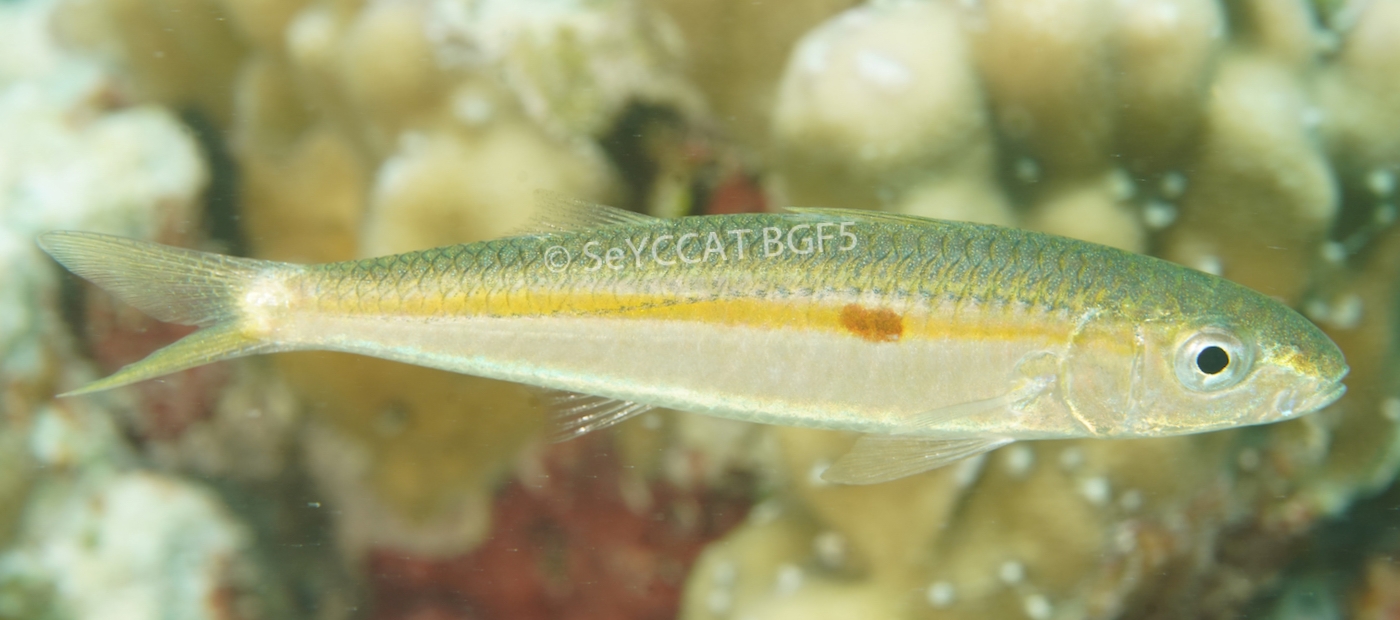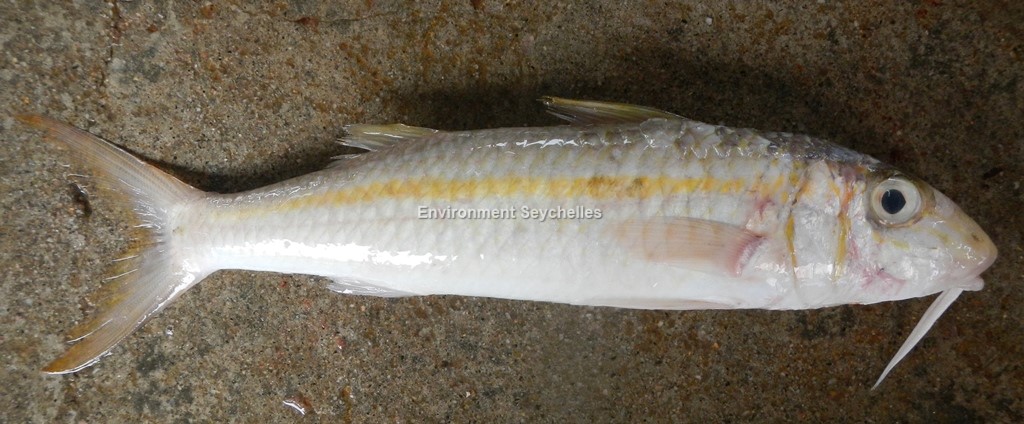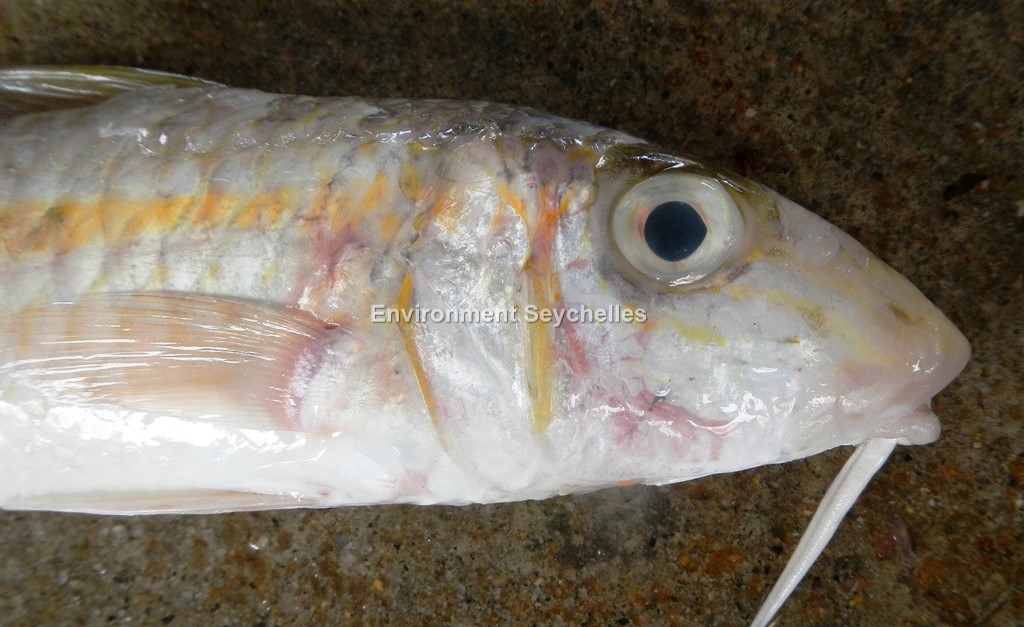Description:
Dorsal spines: 8; Dorsal rays: 9; Anal spines: 1; Anal rays: 7.
Elongate bodied, slender goatfish. Barbels do not usually reach rear margin of preopercle. Mouth small, maxilla not reaching front edge of eye. Band of villiform teeth in jaws.
Colour. Silvery white shading darker dorsally to a diffuse olive grey. Yellow stripe on body from eye tapering out at caudal peduncle, bordered by two pale bluish, narrow
midlateral stripes. Dark blotch on yellow stripe below first dorsal fin (may be very faint in some specimens). Some pale yellow striping on cheek and often along abdomen.
Barbels white. Dorsal and caudal fins white to yellowish, partly hyaline. Pectoral fins pale pink and partly transparent. Pelvic and anal fins whitish and partly transparent.
Size:
Maturity: Lm 20.8 cm TL. Range: 12 - ? cm. Max Length: 43 cm TL, commonly to 25 cm TL.
Habitat and Ecology:
Inhabits sandy bottoms in calm lagoons or bays in coastal waters (depth 1-76 m). Tends to remain in near-stationary aggregations on reefs by day. Individuals feed at night
over open sandy areas, consuming a range of invertebrates including crustaceans, molluscs, worms, heart urchins, foraminifera and occasionally small fish. Large adults are
often found solitary on sand slopes with other species following to feed on prey that are disturbed when the goatfish is feeding. Benthopelagic.
Fishery Status:
This species is not protected or subject to fishery regulations. It is caught in the trap fishery or by net, but it is a relatively uncommon component of the catch.
Notes:
The similar Goldstripe Goatfish, Mulloidichthys vanicolensis, fins yellow, lacks the dark blotch on the mid-lateral stripe (although the blotch is not always present in
M. flavolineatus) body depth 3.3 to 3.4 times in standard length (3.6 to 4.7 times in M. flavolineatus). Gillrakers 32 to 36 (33 to 38 in M. flavolineatus).
In water photo courtesy Eleanor Brighton and Chris Mason-Parker (c) 2022 Blue Safari Seychelles/Marine Conservation Society, Seychelles. Photograph taken at Alphonse group 2022.
References:
Bray, D.J. (2020). Mulloidichthys flavolineatus in Fishes of Australia, http://136.154.202.208/home/species/583 (16/04/20).
Fischer, W. & G. Bianchi (eds), (1984). FAO species identification sheets for fishery purposes. Western Indian Ocean; (Fishing Area 51). Prepared and printed with the
support of the Danish International Development Agency (DANIDA). Rome, Food and Agricultural Organization of the United Nations, vols 1-6.
Froese, R. & D. Pauly. (Eds.) (2019). FishBase. https://www.fishbase.se/summary/Mulloidichthys-flavolineatus (06/06/19).
Smith-Vaniz, W.F. & Williams, I. (2016). Mulloidichthys flavolineatus (errata version 2017). The IUCN Red List 2016: https://dx.doi.org/10.2305/IUCN.UK.2016-3.RLTS.T50903119A51308207.en. (16/04/20).
Citation:
Nevill, J.E.G. (2019). Mulloidichthys flavolineatus, Yellowstripe goatfish . Seychelles Seatizens. www.seatizens.sc. https://seatizens.sc/species/mulloidichthys-flavolineatus-lacepede-1801/ (updated 15/07/22).




There are no comments